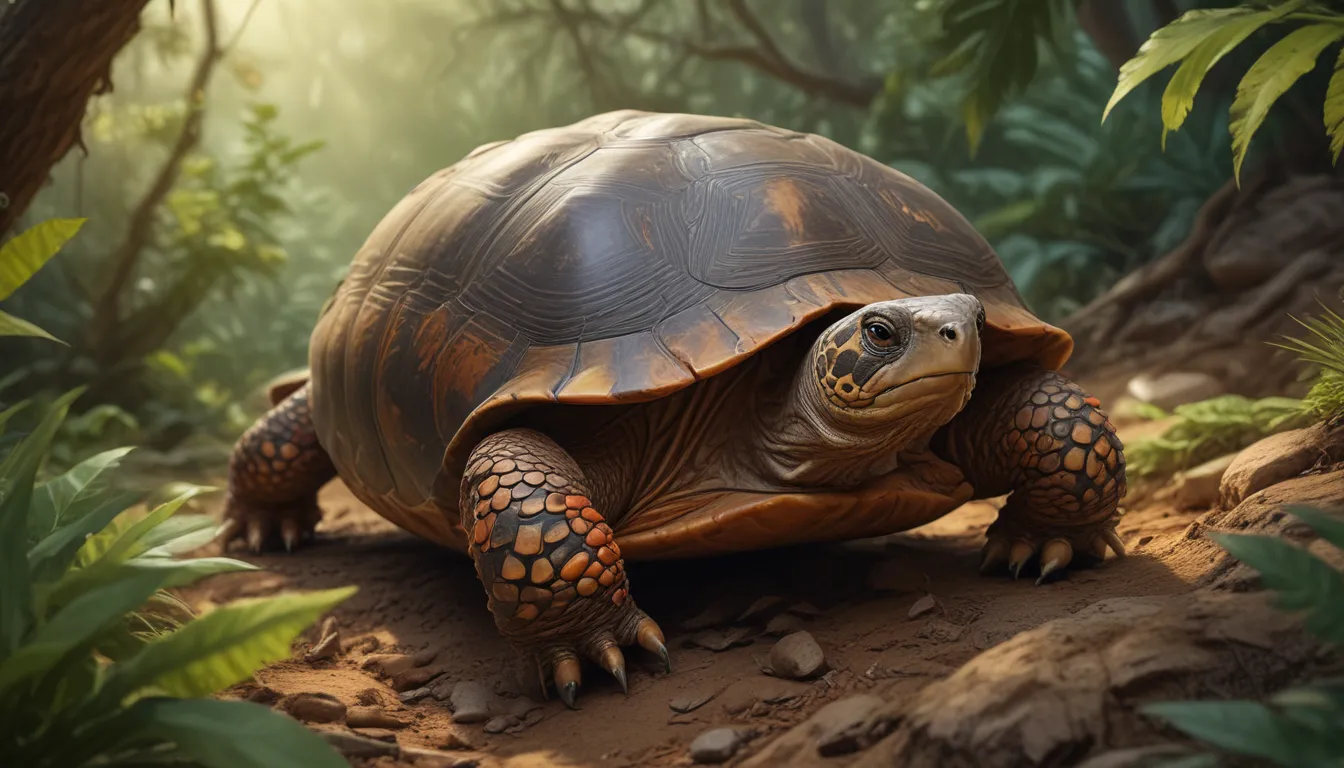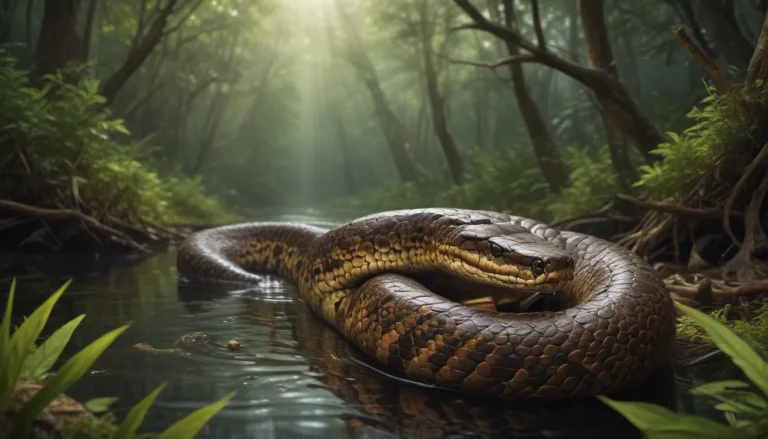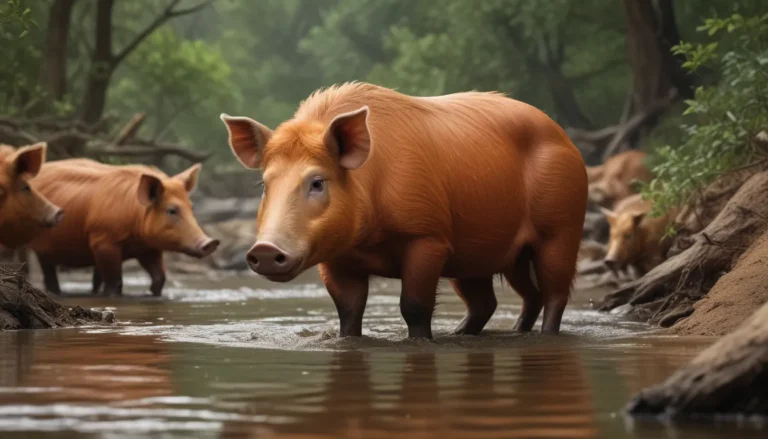The pictures we use in our articles might not show exactly what the words say. We choose these pictures to make you interested in reading more. The pictures work together with the words but don’t take their place. The words still tell you the important facts.
Are you intrigued by the captivating world of reptiles and looking to learn more about the charming red-footed tortoise? These unique creatures with their reddish-orange scales and distinctive shell patterns have captured the hearts of animal enthusiasts and reptile lovers alike. In this comprehensive guide, we will explore 15 intriguing facts about red-footed tortoises, shedding light on their natural habitat, diet, behavior, adaptations, and more. Whether you are considering welcoming a red-footed tortoise into your family or simply curious about these remarkable creatures, this article will provide you with a wealth of valuable information to deepen your understanding of this beloved species.
Delving into the World of Red-Footed Tortoises
Red-footed tortoises are renowned for their striking appearance, social nature, and longevity. They hold a vital role in their ecosystems and have unique adaptations that set them apart from other tortoise species. Let's embark on a journey of discovery and unravel the mysteries of these fascinating reptiles.
Unique Shell Pattern
One of the most distinguishing features of red-footed tortoises is their unique shell pattern. Characterized by yellow or white lines on a dark brown or black background, this distinctive design helps them camouflage in their natural habitat, blending seamlessly with the environment to evade predators.
Native Habitat in South America
Red-footed tortoises call the lush forests and grasslands of South America their home, thriving in warm and humid environments. Countries like Brazil, Paraguay, and Colombia serve as the picturesque backdrop for these enchanting creatures to roam and flourish.
Herbivores at Heart
Feeding primarily on a vegetarian diet, red-footed tortoises consume a variety of plant matter, including fruits, leaves, and flowers. Their keen sense of smell aids them in locating food in the wild, ensuring they receive the necessary nutrients to sustain their health and vitality.
Long and Leisurely Lives
With an impressive lifespan that can exceed 50 years in captivity and even extend beyond 70 years with proper care, red-footed tortoises are long-term companions for those who welcome them into their homes. Their gentle demeanor and enduring presence make them cherished members of the family.
Surprising Swimmers
Contrary to common misconceptions, red-footed tortoises are adept swimmers who enjoy navigating through shallow waters with ease. Their aquatic capabilities add a dynamic element to their behavior, showcasing their adaptability to various environments.
Social Butterflies
Known for their sociable nature, red-footed tortoises often gather in small groups, engaging in communal activities such as feeding and basking in the sun. Through sounds and body language, they communicate and interact, forming bonds that enhance their social dynamics.
Temperature-dependent Sex Determination
A fascinating aspect of red-footed tortoises is their temperature-dependent sex determination mechanism. The temperature at which the eggs are incubated plays a crucial role in determining the sex of the hatchlings, adding an intriguing biological twist to their reproductive process.
Slow and Steady Movers
Red-footed tortoises are not known for their speed but rather for their deliberate and steady pace. Their range of movement is relatively limited compared to other tortoise species, reflecting their unhurried approach to life and exploration.
Embracing Hibernation
During colder months, red-footed tortoises undergo a period of hibernation, seeking sheltered locations to lower their metabolic rate and conserve energy until warmer temperatures return. This natural behavior helps them survive adverse environmental conditions.
Solitary Yet Territorial Males
Male red-footed tortoises typically prefer solitary roaming in their territory, especially during the breeding season when they become more territorial in their interactions. This behavior reflects their need for personal space and independence.
Master Burrowers
Red-footed tortoises exhibit a natural instinct to burrow, creating tunnels for protection from extreme temperatures, predators, and nest-building purposes. Their burrowing behavior showcases their adaptability and resourcefulness in navigating their surroundings.
Vibrant Color Display
While their shell may feature dark hues for camouflage, red-footed tortoises flaunt vividly colored heads and legs in shades of orange, red, and yellow. This vibrant display adds a pop of color to their appearance, accentuating their beauty and uniqueness.
Skilled Climbers
Contrary to expectations, red-footed tortoises possess impressive climbing abilities, using their strong limbs and sharp claws to navigate small trees and rocky surfaces in search of food or basking spots. Their agility and dexterity in climbing showcase their adaptability in diverse environments.
Seed Dispersal Champions
As herbivores, red-footed tortoises play a vital role in seed dispersal within their ecosystems. By consuming fruits and vegetation, they inadvertently spread plant seeds through their excrement, contributing to the propagation and diversity of plant life in their habitats.
Conservation Concerns and Efforts
Though beloved by many, red-footed tortoises face threats from habitat loss, illegal pet trade, and predation. Conservation efforts, including captive breeding programs and protected habitats, aim to ensure the survival and well-being of these remarkable creatures for generations to come.
Unveiling the Enchantment of Red-Footed Tortoises
Red-footed tortoises stand as fascinating and endearing creatures that enrich the lives of those who appreciate their unique qualities. Their longevity, social interactions, and exquisite beauty make them a sought-after choice for pet owners and reptile enthusiasts alike. By understanding their natural behaviors, habitat requirements, and conservation needs, we can forge a deeper connection with these captivating reptiles and contribute to their well-being.
From the depths of South American forests to the comfort of our homes, red-footed tortoises continue to mesmerize us with their resilience, charm, and adaptability. By immersing ourselves in the 15 red-footed tortoise facts highlighted in this article, we gain a deeper appreciation for the intricacies of their existence and the profound impact they have on their ecosystems.
FAQs: Exploring Curious Queries About Red-Footed Tortoises
- How big do red-footed tortoises get?
-
Red-footed tortoises can reach sizes of 12-15 inches in length and weigh between 7-15 pounds when fully grown.
-
What do red-footed tortoises eat?
-
Red-footed tortoises have an omnivorous diet, consuming a mix of fruits, vegetables, leafy greens, and protein sources such as insects and worms.
-
Are red-footed tortoises good as pets?
-
Red-footed tortoises make excellent pets for reptile enthusiasts, requiring proper enclosure, regular feedings, and a suitable environment to thrive.
-
How long do red-footed tortoises live?
-
Red-footed tortoises have impressive lifespans, with some individuals living up to 50 years or more when provided with proper care.
-
Do red-footed tortoises need a heat source?
-
Yes, red-footed tortoises require a heat source to maintain their body temperature, with options like reptile heat lamps or under-tank heating pads.
-
Can red-footed tortoises swim?
-
While not strong swimmers, red-footed tortoises can float and paddle in shallow water, requiring supervision during water activities.
-
Do red-footed tortoises hibernate?
-
Red-footed tortoises do not hibernate in the wild or in captivity, maintaining an active metabolism year-round.
-
How often should red-footed tortoises be fed?
-
Red-footed tortoises should be fed daily, with a diet comprising fresh fruits, vegetables, leafy greens, and occasional protein sources.
-
Can red-footed tortoises be kept together?
-
Red-footed tortoises are generally sociable and can be kept together, but monitoring for aggressive behavior and providing ample space and hiding spots is essential.
-
Are red-footed tortoises endangered?
- Red-footed tortoises are not currently classified as endangered but face threats such as habitat loss and illegal pet trade, necessitating conservation efforts for their protection.
Embracing Knowledge, Appreciating Nature
As we unravel the wonders of red-footed tortoises through these 15 captivating facts, we are reminded of the beauty and diversity of the natural world. These remarkable creatures serve as ambassadors of resilience, adaptability, and interconnectedness within their ecosystems. By learning about their habits, traits, and needs, we gain a deeper appreciation for the intricate tapestry of life and our role in preserving the wonders of the animal kingdom. Let us continue to explore, learn, and cherish the enchanting world of red-footed tortoises and other fascinating beings that grace our planet with their presence.






